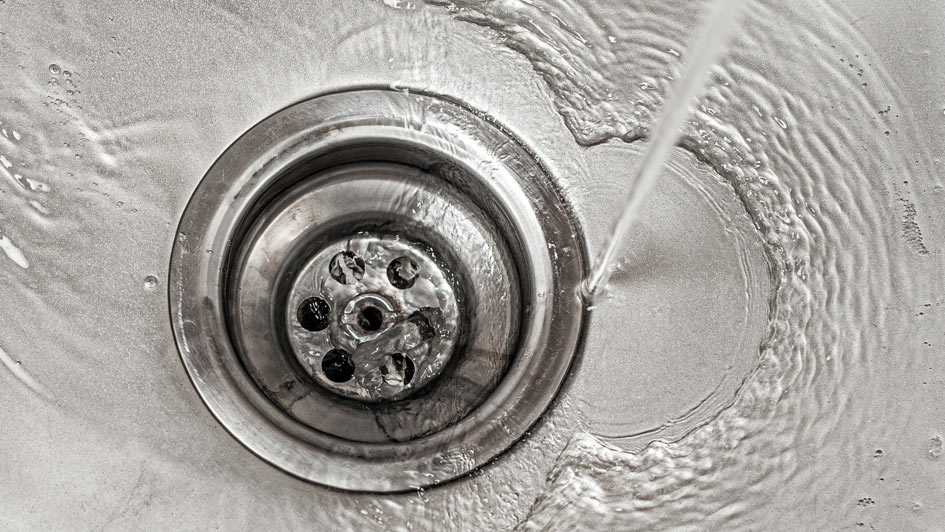
Backed-up sinks. Discolored water. Leaks. These issues may sound intimidating, but the truth is they’re frequent problems in many homes. In fact, lots of them can be solved with just a few simple steps.
With the proper tools and knowledge, you can save yourself time—and money—by tackling these issues yourself. Plus, understanding how to remedy common problems will help you know when the issue is more complex and best solved by a professional.
So, don't let a clogged drain or a leaky faucet get you down—with the right expertise, it's easy to fix common plumbing problems all by yourself. We’ll take a look at several frequent plumbing problems and how you can take care of them.
1. Why Is My Sink Making a Gurgling Sound?
If you’re concerned by a gurgling sound coming from your sink, it may be a sign of air or water trapped in the pipes. This can happen if there is a blockage in the pipes, or if a plumbing vent has become obstructed or disconnected.
Fortunately, this situation is relatively easy to correct:
- First, try using a plunger to remove any blockages that may be creating the gurgling sound.
- If a plunger does not work, you can try using a drain snake to remove particles from the pipe. Last of all, if your plumbing vent is blocked or disconnected, make sure to reconnect it and inspect it for any other objects in the way.
If you’re still having difficulties, it may be best to contact an experienced plumber in Moline. They can help identify the reason you are having the issue and provide you with skilled repair service.
2. Why Won't My Sink Drain?
If a sink is not draining, in most cases that’s because of something blocking the drainpipe. However, it may also be a result of a much larger concern with your plumbing system.
Common reasons why the water in your sink won’t drain:
- Blocked or clogged pipes: Over time, hair, food scraps, grease, animal fats and other junk can collect in the pipes, producing a blockage that prevents the water from draining.
- Broken seals: If the sink’s rubber seals are cracked or busted, they may not be making an effective seal around the drain to keep out air and permit the water to drain.
- Buildup in the trap: The curved pipe under the sink, called a P-trap, can become blocked with debris or form leaks which stop it from draining properly.
- Blocked vent pipe: An obstruction in a vent pipe, which allows gas to escape your plumbing system, might keep your sink from draining. Vents can be blocked by debris where they leave your house.
To unblock a pipe, try using a plunger to push the clog through the line. If that doesn’t work, think about using a plumbing snake to clear away hair or other debris and allow the water to run through. Other methods are to use baking soda and vinegar or a drain-cleaning product to dissolve the clog.
Depending on your plumbing setup, you may be able to check for a blockage in the P-trap, which is a bend in the pipe below your sink. This is achieved by dismantling the pipe and clearing the line. To do this, first shut the faucet off and place a bucket below the bend. Then, take the pipe apart and pull out any debris. Once it’s clean, put the pipe back together and wash it out with hot water.
If trying to clear the line and P-trap isn't effective, look at where your drain vent exits your house to make sure it isn’t blocked by debris such as leaves, dirt or even a nest by an overenthusiastic bird or other animal. If this also doesn’t work, you may want to get a hold of an experienced professional for plumbing repair in Moline to make sure there isn’t a significant problem with your plumbing.
3. Why Is Cloudy Water Coming from the Sink?
In general, cloudy or white-looking water is due to air bubbles in the water. This is normally innocuous and can often go away on its own. It could be because of a water company doing work on the lines, or a close-by construction project.
One way to find out if cloudy water is caused by air bubbles is to fill a glass of water and then leave it on the countertop. Chances are the air bubbles will go away and the water will eventually become crystal clear. If the water is still cloudy after 24 hours, you may have another issue and will want to consult a professional for assistance.
The off-colored water also could be due to high levels of minerals in the water in your home. Excessive minerals accumulate until they alter the water’s appearance and taste, in which case a water softener may be of assistance in fixing the problem. It can counter hard-water buildup from ruining your pipes and producing the distasteful cloudy water.
If cloudy water is a reoccuring problem, consider cleaning off the aerator, which is a screen at the end of your faucet. Use a water and vinegar solution to clear away any debris or buildup. If that doesn’t work either, you may want to consult a skilled plumber and let them find a solution.
4. Why Won't My Sink Stop Leaking?
The reason for a leak or water drip beneath a sink is often because a plumbing fixture has worn out or malfunctioned. Occasionally, it’s caused by a clog obstructing the line.
Here are a few of the more commonly seen causes of sink leaks and how you can resolve them:
- Loose Connections: One of the most frequent causes of a puddle of water underneath the sink is because of loose connections between pipes, fixtures and hoses. If any part has not been correctly tightened, or if it was not sealed all the way in its fitting, water can simply escape from these weak spots.
- Worn-Out Washers: Over the years, the washer in a sink fixture can become worn out and fail to create a satisfactory seal. If you observe water seeping from the sides of the handle or base of the faucet, it’s very likely that a new washer is needed.
- Corroded Pipes: The pipes underneath a sink can wear down over time, causing weakening and cracks. Corrosion is particularly common when working with older or discounted materials, so it's important to look for any indications of degradation in order to avoid a major leak.
- Clogged Drains: A clogged drain can make water back up and start dripping from the seal. It's essential to examine the drain for any indications of blockage and to clear away any debris that may be slowing water flow.
5. Why Is the Water from My Sink Discolored?
The most commonly encountered cause of brown tap water is rust. Rust in most cases comes from elevated levels of iron in the water, which can be the result of corroded pipes or worn-out fixtures. Rust may also develop when sediment accumulates. Buildup may form if the filtration system is declining or there are high levels of minerals like manganese.
In some instances, the water can be muddied from silt or clay particles that have been stirred up from service on the water line or your plumbing. If you get your water from a municipal utility company, be sure to contact them to inform them of the discoloration. They will be able to tell you if there has been any recent work on the water lines.
A knowledgeable plumber in Moline can help you establish if the discoloration is originating from a rusting pipe that needs to be replaced, or if a filtration system may get rid of the unsightly problem.
6. Why Is My Sink Draining Slow?
The most commonly encountered explanation for a sink to drain slow is a partial blockage in the pipes. Hair and soap scum are likely suspects for a clogged bathroom sink, while food scraps and grease—along with soap scum—often are at fault for kitchen sink clogs.
Three ways you can fix a clogged sink include:
- Plunger: One option to help you clear away a partial clog is with a plunger. If there isn't any standing water in the sink, turn on the faucet to put in enough water to cover the drain. Then, use the plunger to try to dislodge the clog.
- Plumbing snake/weasel: If a plunger doesn’t get the job done, you may try using a plumbing snake—a long, thin piece of plastic—to put down your pipe to attach to the clog so you can pull it out. Sometimes, these are called plumbing weasels.
- Chemical Clog Remover: Several chemical clog removers being sold today break up blockages in sink pipes. Be certain to follow all directions, and that the remover won’t damage your home’s pipes or the basin in your sink.




